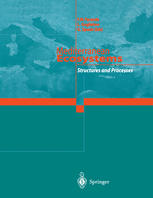

Most ebook files are in PDF format, so you can easily read them using various software such as Foxit Reader or directly on the Google Chrome browser.
Some ebook files are released by publishers in other formats such as .awz, .mobi, .epub, .fb2, etc. You may need to install specific software to read these formats on mobile/PC, such as Calibre.
Please read the tutorial at this link: https://ebookbell.com/faq
We offer FREE conversion to the popular formats you request; however, this may take some time. Therefore, right after payment, please email us, and we will try to provide the service as quickly as possible.
For some exceptional file formats or broken links (if any), please refrain from opening any disputes. Instead, email us first, and we will try to assist within a maximum of 6 hours.
EbookBell Team

4.1
60 reviewsThis new book, as described in the Preface, presents a collection of contributions by several participants of the First National Congress of Marine Sciences organ ized by the CoNISMa. The 62 selected papers, grouped into seven sections, deal with a number of significant and current topics of marine research conducted at Mediterranean stations mostly situated along the Italian coast. The focus of each section is clearly expressed in the headings. The research sites may be conceived as "key" or focal points in the study of marine ecosystems. Indeed. the information collected transcends regional inter ests by promoting better understanding of the structures and processes charac terizing a wide area of the Mediterranean basin. The reader may easily note that in the entire book special attention is devoted to the observed changes and the ensuing diversity in time and space. Temporal diversity ranges from paleontological scales to shorter time scales. The latter is the case, for instance, with chemical species, circulation patterns, energy fluxes linking particulate matter with microbial communities, structure of food webs, bacterial, plant and animal species, etc. As to the disciplinary aspects, the majority of papers reflect a modern approach, in both conceptual and methodological terms, and a marked tendency to overcome the boundaries of specific disciplines. This applies particularly to the evaluation of intraspecific biodiversity, where methods borrowed from mo lecular biology are largely utilized.